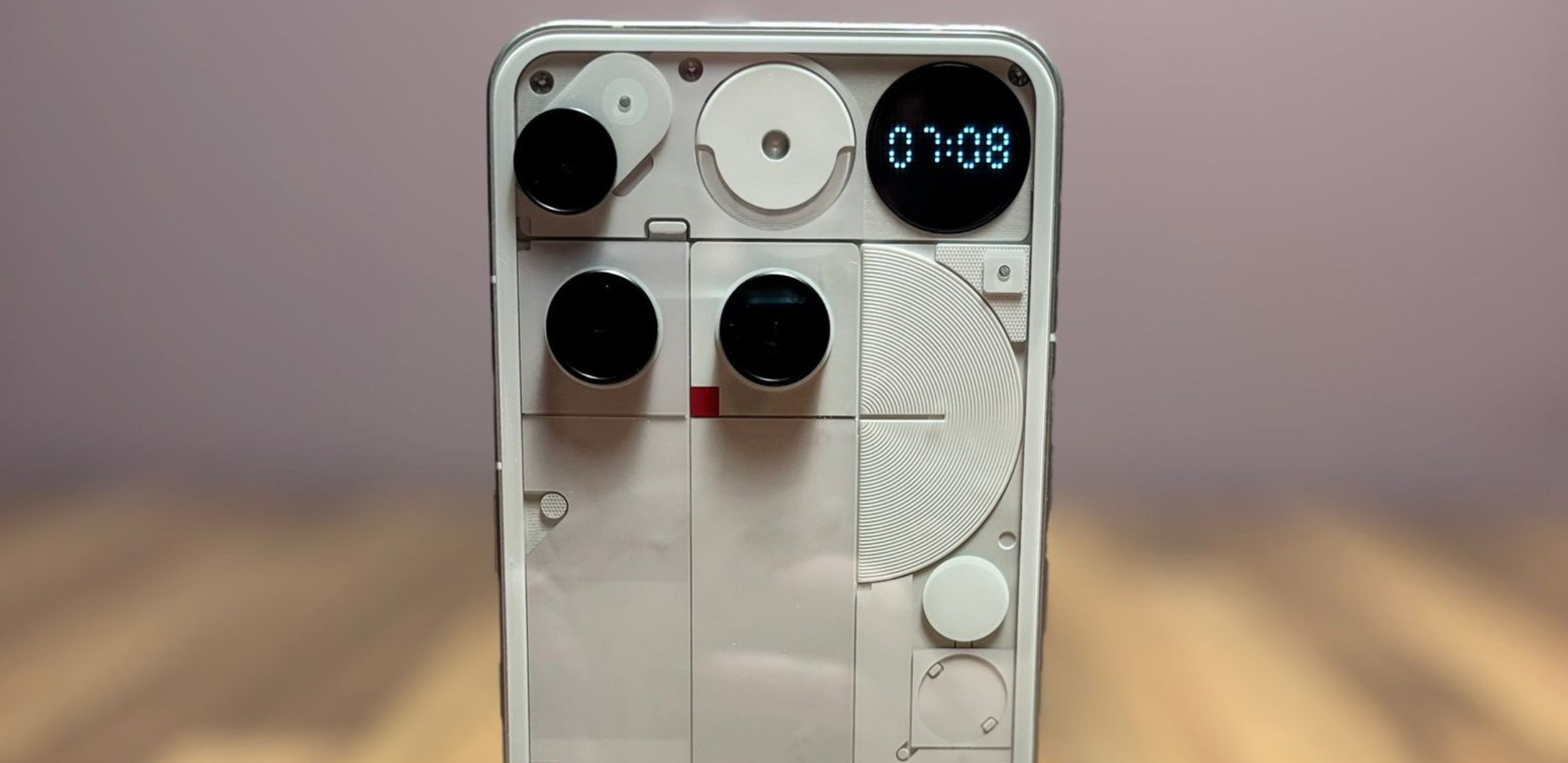
On a desk in Shoreditch, surrounded by product mock-ups and their famously transparent earbuds, the team at Nothing has been working towards this moment for five years. The London-based company has made its name on mid-priced smartphones that looked like nothing else, and, crucially, on selling the idea that tech could be playful again.
I switched to Apple in 2021 after years with Android. And once you switch, it feels like a mountain climb to even consider holding an Android again. Okay, perhaps a little dramatic, but you get the point.
I've seen the Samsungs of the world release Galaxy after Galaxy and heard whispers that the hardware and camera are probably better on premium Androids when compared; Even Gary Raucher at ASICS mentioned it in his interview.
So, here it goes. I'm giving Nothing a try.
And, Nothing, with the Phone (3), are stepping into more dangerous waters: the flagship market. £799 / €799 / $799. That’s the same opening price as Apple’s iPhone 16 and Samsung’s Galaxy S25. The move is akin to a boutique coffee roaster suddenly debuting an espresso machine for the price of a La Marzocco Linea Mini: the stakes are higher, the competition sharper, the margin for error smaller.
It’s also a launch that arrives alongside the brand’s first full-size headphones, engineered with KEF- more on those soon.
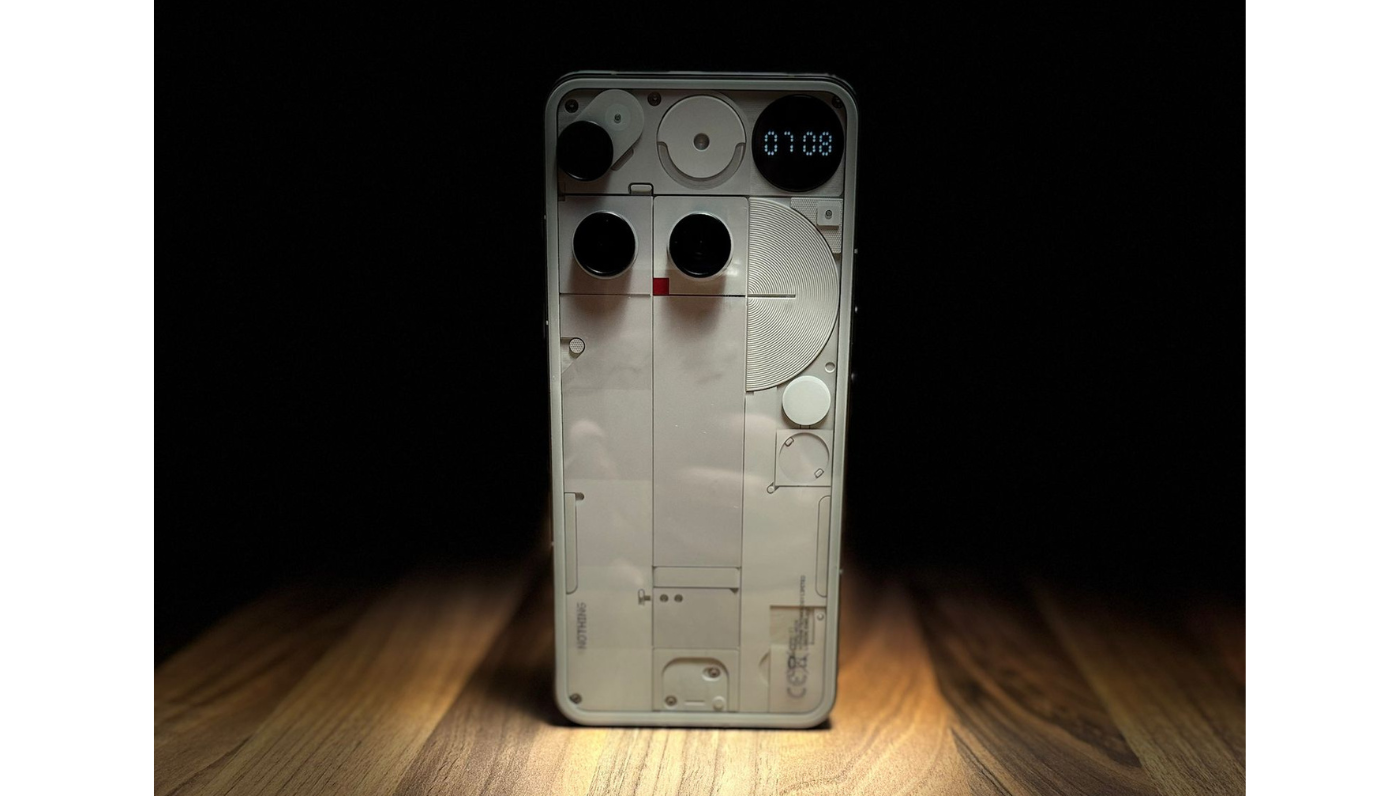
Face-on, the Phone (3) is all convention: a 6.67-inch OLED display with pixel density matching the iPhone 16, razor-even bezels, a 120Hz refresh rate, and a blinding 4,500-nit peak brightness. Flip it over, and the safe lines dissolve. The back is a semi-transparent composition of coils, screws, and printed circuitry. It’s a design that divides even the most sympathetic reviewers.
The most prominent change is the Glyph Matrix: 489 white LEDs arranged in a perfect circle, replacing the light bars of earlier models. It can display a minimalist icon when your partner calls, a battery percentage, or a frivolous “glyph toy” (spin-the-bottle, magic eight-ball). Its utility is greater than before; its visual drama, perhaps less. Where the old glyphs were pure theatre, the new matrix is part prop, part tool.
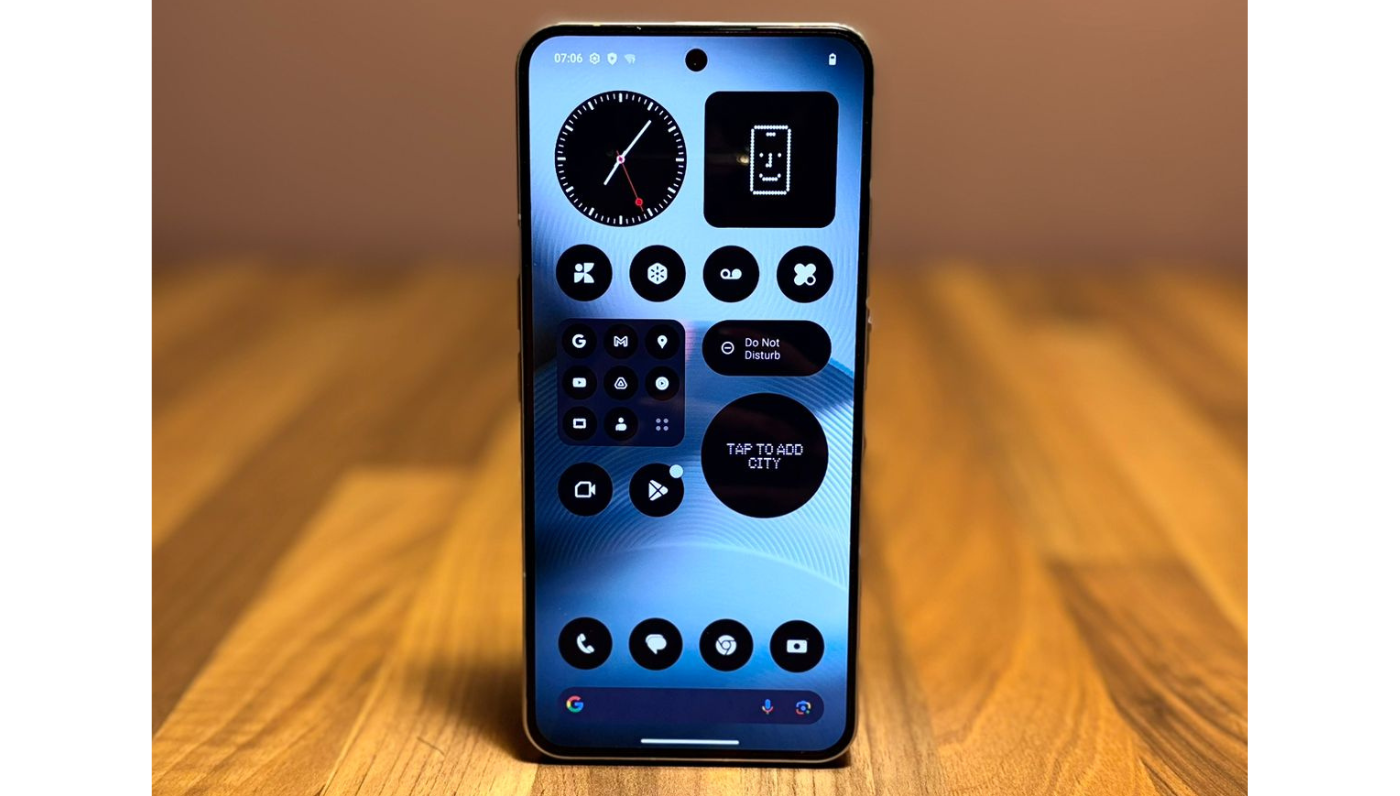
Inside is Qualcomm’s Snapdragon 8s Gen 4; fast and efficient, but a step behind the Snapdragon 8 Elite in Samsung’s Galaxy S25 and OnePlus’s 13 Pro. Paired with 12GB RAM and 256GB storage at entry, it’s smooth in daily use and well-matched to Nothing OS’s clean animations. Push it into sustained gaming or 8K video editing, and the deficit to those pricier flagships shows.
The OLED panel impresses: bright, sharp, colour-accurate. But the choice of LTPS over LTPO means the refresh rate only drops to 30Hz instead of 1Hz, costing a touch of battery efficiency. Gorilla Glass 7i, a mid-tier protective glass, covers the front. For me, this a subtle but real downgrade from the Victus 2 on Samsung’s S25.
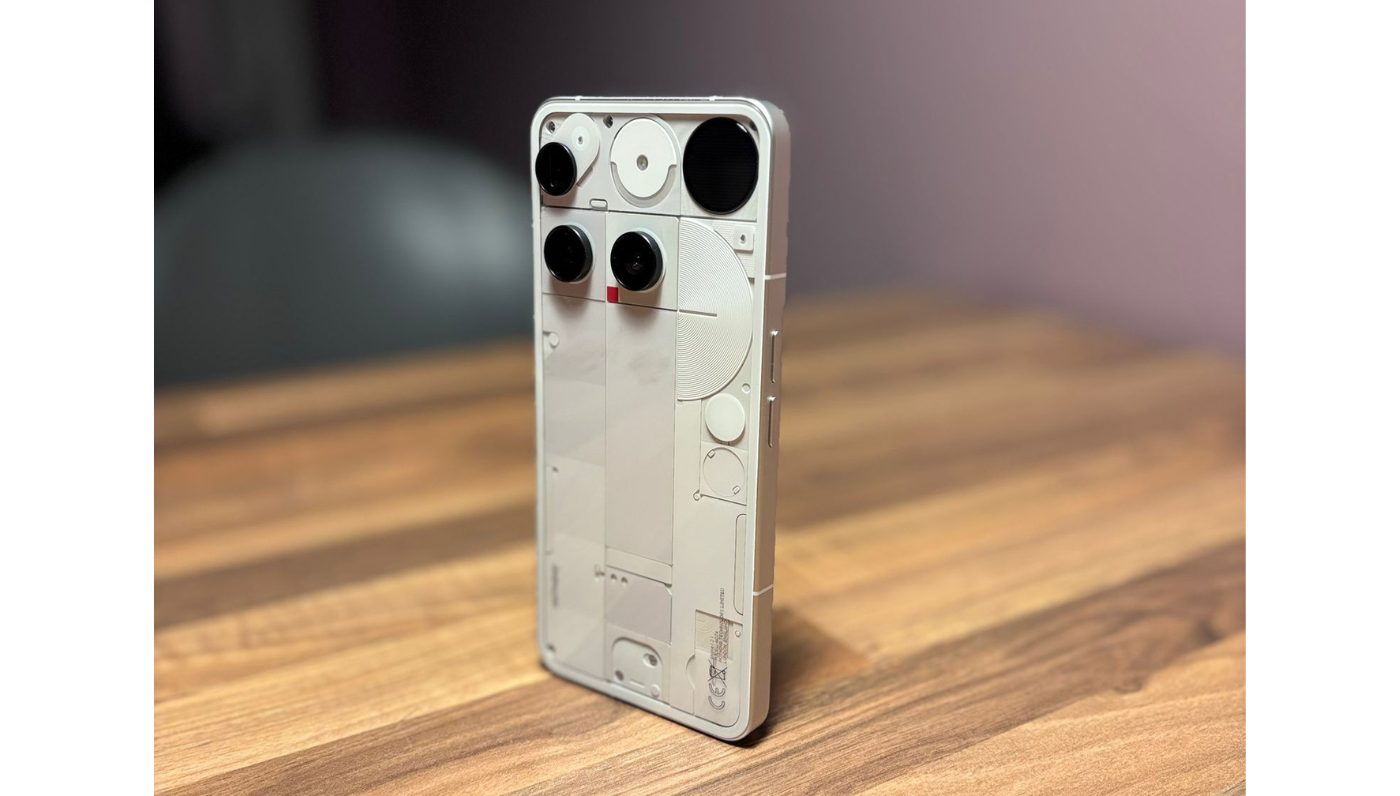
Here, Nothing lands a clear win. A silicon-carbon 5,500 mAh cell (labelled 5,150 mAh in some markets for shipping purposes) delivers two days of moderate use without fuss. It charges to 50 percent in under 20 minutes with a 65W USB-C charger (sold separately) and supports wireless plus reverse charging, both features absent on some competitors in this bracket.

Nothing has given every lens on the Phone (3) the same number: 50 megapixels. Main, ultra-wide, telephoto, selfie. The main sensor, the largest in the company’s history, captures detailed, lively images in bright light but suffers occasional autofocus softness. The 3× telephoto doubles as a macro lens, focusing as close as 10 cm, while the ultra-wide retains more detail than expected.
In complex lighting, colour tuning and low-light sharpness still trail Apple’s and Google’s best. AI-assisted “super resolution” kicks in beyond 30× zoom; but I'm not sure I’d use this function often.
Nothing OS 3.5 sits atop Android 15 like a carefully considered brand identity: dot-matrix typography, monochrome iconography, and a handful of flourishes that make the interface feel coherent, not cluttered.
Two headline features: Essential Space (a capture-and-transcribe tool) and Essential Search (a universal search bar with on-device maths and AI lookups), hint at the brand’s direction but aren’t yet indispensable. Update promises are solid: five years of OS upgrades, seven of security patches, just behind Samsung’s category-leading seven-and-seven.
The Phone (3) is not the most powerful smartphone in its bracket. Nor does it have the most consistent camera or the most advanced display tech. What it offers is something harder to copy: a unified aesthetic, a refusal to blend in, and a brand that behaves more like a design studio than an engineering conglomerate.
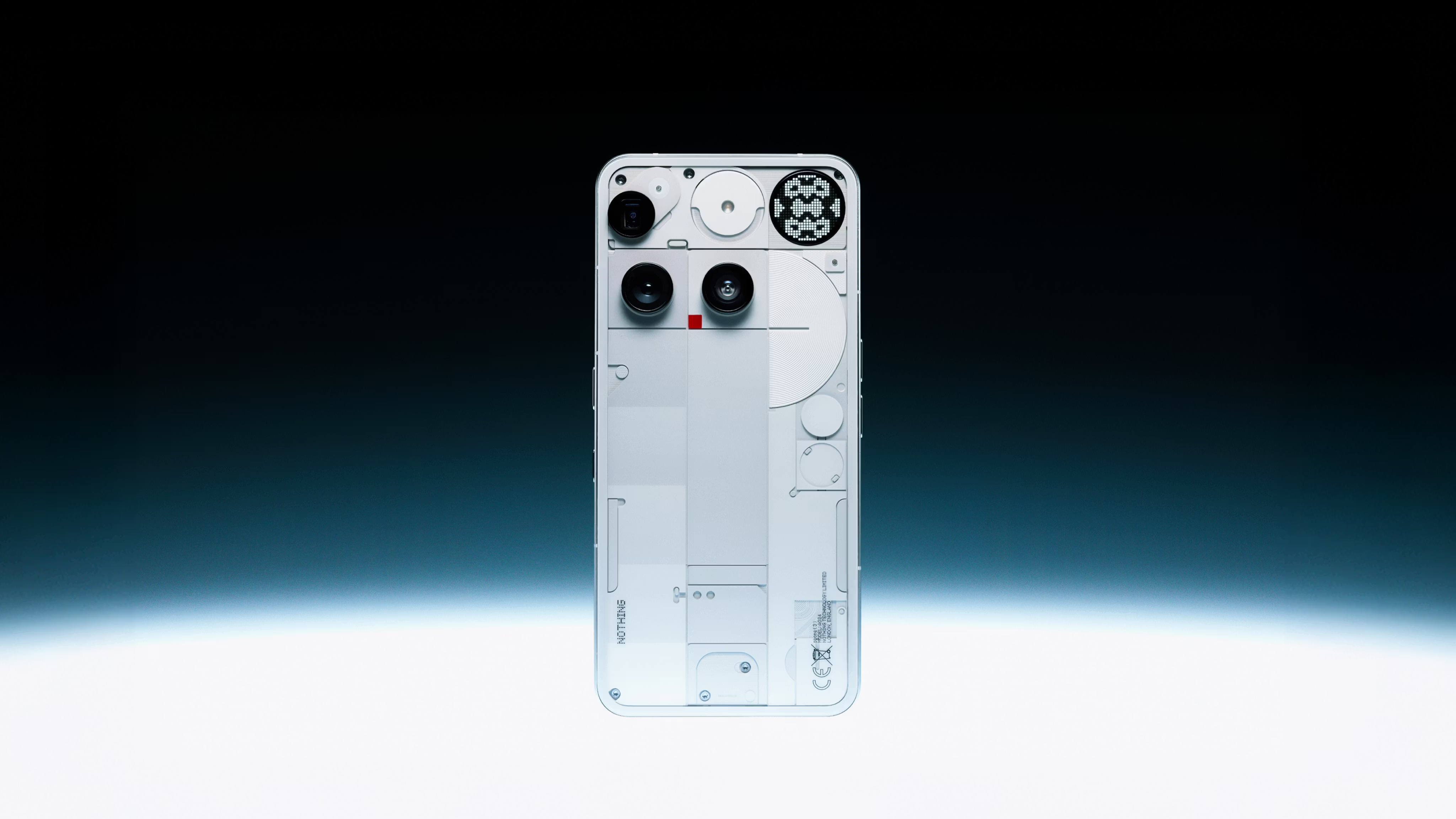
The Nothing Phone (3) isn’t chasing the spreadsheet win. It’s not the most powerful, nor the most pixel-perfect, in its class. But it’s the most deliberate. It’s a handset that wears its point of view on its sleeve, from the dot-matrix icons to the semi-transparent back. In a market optimised for sameness, it’s a rare object of difference.
It will suit those who like their tech to speak before they do. Design-conscious buyers who choose the unusual over the obvious. It’s for Android users stepping up from the middle tier without wanting to breach four figures. Or the early adopters who collect the alternative. Creatives who value a coherent interface. Lifestyle-led buyers who don’t mind a phone doubling as a conversation starter - think spin the bottle over a pint.
It’s not for those who demand the absolute best camera, the longest update policy, or the most efficient display tech, but for everyone else, it’s a small rebellion you can carry in your pocket.
4/5